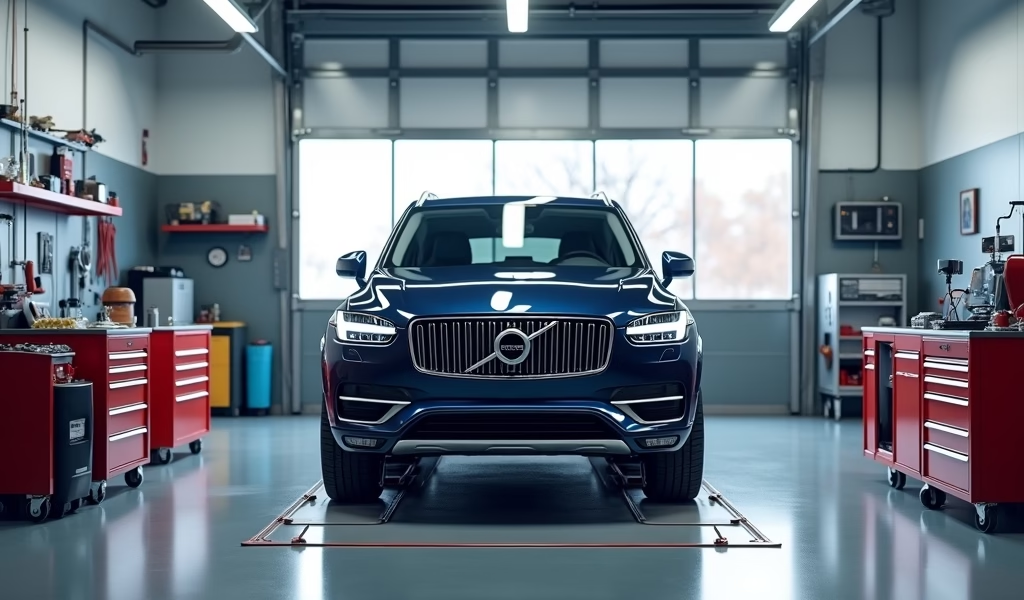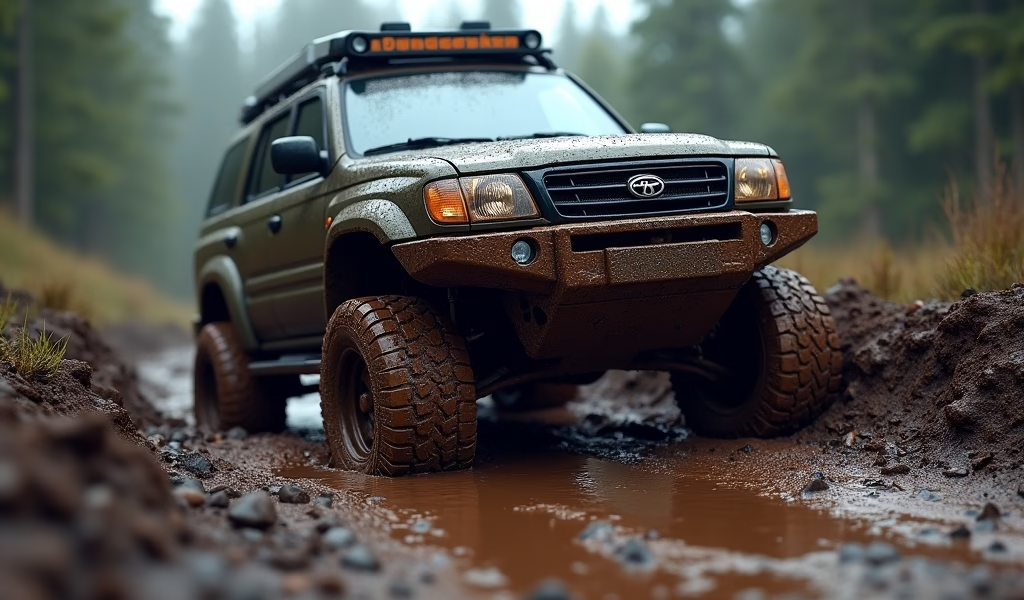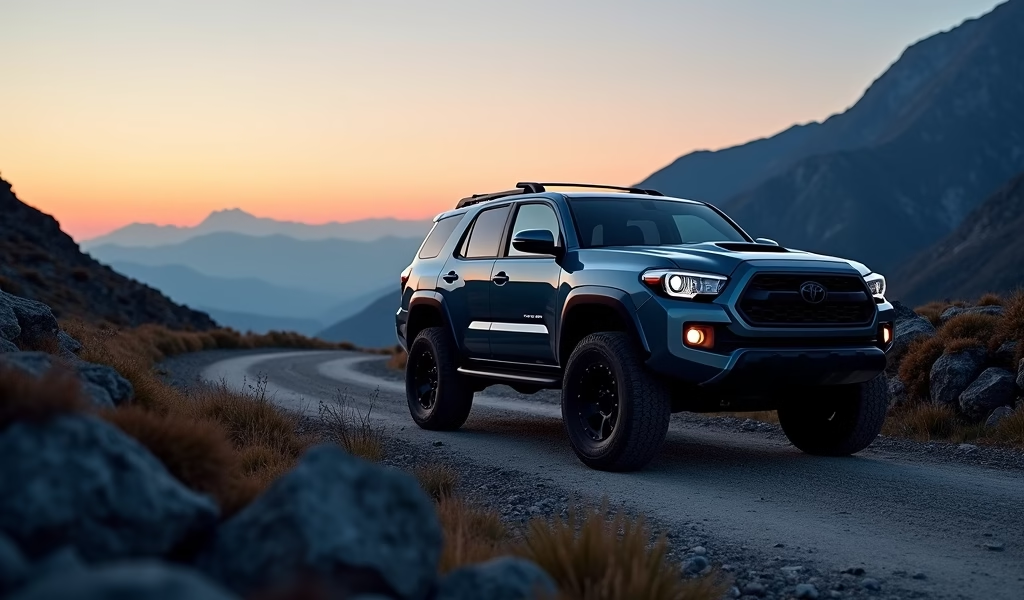Overview
This article outlines seven essential maintenance tips for AWD SUVs, including regular fluid checks, proper tire care, differential maintenance, mindful driving habits, seasonal preparations, and electronic system care. The author emphasizes that AWD systems require specialized attention beyond standard vehicle maintenance to ensure optimal performance, longevity, and value retention.
Table of Contents
- Understanding AWD SUVs: What Makes Them Special
- Tip 1: Regular Maintenance Is Your AWD’s Best Friend
- Tip 2: Tire Care – The Foundation of AWD Performance
- Tip 3: Differential Maintenance – The Heart of Your AWD System
- Tip 4: Mindful Driving Habits for AWD SUVs
- Tip 5: Seasonal Preparations for Your AWD SUV
- Tip 6: Regular Fluid Checks and Changes
- Tip 7: Caring for Your AWD SUV’s Electronic Systems
- Conclusion: Your AWD SUV Deserves The Best Care
- Frequently Asked Questions
Understanding AWD SUVs: What Makes Them Special
When it comes to the best AWD SUV options on the market, what you’re really investing in is a mechanical marvel that deserves proper attention. All-wheel drive systems are like the unsung heroes of the automotive world – silently distributing power to all four wheels like a conductor leading an orchestra to perfect harmony. As someone who’s had their hands deep in transmissions and differentials for over two decades, I can tell you that these vehicles aren’t just ordinary rides; they’re sophisticated machines that require specific care.
The beauty of a well-maintained AWD system is like watching a ballet dancer move effortlessly across rough terrain – graceful yet powerful. Whether you’re navigating through winter’s icy grip or tackling muddy backroads, the best AWD SUV properly cared for will serve you faithfully for many years. But like any relationship worth having, it requires commitment.
Today, I’ll walk you through seven proven tips that will keep your AWD system performing optimally compared to other drivetrains. These aren’t just generic maintenance suggestions – they’re specialized approaches that address the unique needs of all-wheel drive mechanics. Think of this guide as your AWD SUV’s personal health plan, designed to prevent issues before they start and extend the life of your vehicle’s most important systems.
Tip 1: Regular Maintenance Is Your AWD’s Best Friend
If AWD SUVs could talk, they’d beg for consistent maintenance schedules. Unlike their two-wheel drive counterparts, the best AWD SUV requires more thorough attention because there are simply more moving parts working in concert. It’s like comparing a quartet to a full symphony orchestra – more instruments mean more potential for something to go out of tune.
Regular maintenance isn’t just a suggestion; it’s as essential as water is to fish. At minimum, your AWD SUV needs:
- More frequent oil changes (every 5,000 miles or as manufacturer recommends)
- Transfer case fluid checks every 30,000 miles
- Complete drivetrain inspections during routine services
- Careful attention to manufacturer-specific maintenance intervals
I’ve seen too many perfectly good AWD systems fail prematurely because their owners treated them like standard front-wheel drive vehicles. The complex dance of power distribution through transfer cases and multiple differentials creates additional friction and heat, which can accelerate wear if not properly maintained.
“Prevention costs pennies, but repairs cost dollars,” my old shop teacher used to say. This couldn’t be more true for AWD systems, where neglected maintenance can lead to repair bills that might make your eyes water faster than an onion-chopping contest. Following the manufacturer’s maintenance schedule isn’t just recommended – it’s the golden rule for keeping your investment protected.
Many of the most affordable AWD vehicles come with comprehensive maintenance packages these days. Take advantage of these offers – they’re designed specifically to keep your AWD system in peak condition throughout its early life.

Tip 2: Tire Care – The Foundation of AWD Performance
Tires on an AWD SUV aren’t just rubber meeting the road – they’re the crucial connection between your sophisticated drivetrain and the world. Like a championship basketball team, your tires need to be perfectly matched and in peak condition to perform at their best. The entire premise of AWD advantage crumbles faster than a sandcastle at high tide if your tires aren’t properly maintained.
The single most important aspect of tire care for AWD systems is maintaining consistent tire size, tread depth, and inflation across all four corners. Even small differences can wreak havoc on your drivetrain. Imagine trying to walk with one shoe’s sole twice as thick as the other – that’s essentially what your AWD system experiences with mismatched tires.
Here’s what you absolutely must do for proper AWD tire maintenance:
- Rotate tires every 5,000-7,500 miles to ensure even wear patterns
- Replace all four tires simultaneously when needed
- Maintain consistent tire pressure monthly (differences of even 2-3 PSI matter)
- Check alignment twice yearly, especially after hitting potholes
- Consider seasonal tire changes for optimal performance
I once had a customer who replaced just two tires on his AWD SUV. Within 8,000 miles, his transfer case was screaming in mechanical agony. The difference in tire circumference – just 3/32″ of tread depth – was forcing his AWD system to constantly compensate, essentially fighting itself with every rotation. The $800 tire set he tried to avoid replacing turned into a $2,300 transfer case repair.
According to tire experts at Tire Rack, AWD systems are particularly sensitive to differences in tire circumference. Their research shows that even small variances can dramatically increase wear on differential components. Remember: your tires aren’t just about traction – they’re fundamental to your AWD system’s mechanical health.
Tip 3: Differential Maintenance – The Heart of Your AWD System
If the best AWD SUV system were a human body, the differentials would be its heart – pumping power to where it’s needed most. These mechanical marvels are what make AWD vehicles so capable, distributing torque between wheels with the precision of a master chef seasoning a gourmet dish. Yet many owners neglect these critical components until they fail catastrophically.
Unlike conventional vehicles with a single differential, your AWD SUV likely has at least two – front and rear – and possibly a center differential or transfer case as well. Each one requires specific fluid and maintenance intervals. These fluids aren’t just lubricants; they’re sophisticated formulations designed to handle extreme pressures and temperatures while allowing precise operation of complex gear sets.
Here’s what your differential maintenance should include:
- Fluid checks every 15,000 miles (look for metal particles or a burnt smell)
- Complete fluid changes according to manufacturer specs (typically 30,000-60,000 miles)
- Use only manufacturer-recommended fluids (this is NOT where to save money)
- Listen for whining or grinding noises, especially during turns
- Address any vibrations or shuddering immediately
I’ll never forget the customer who brought in their luxury AWD SUV making a noise “like a blender full of pennies.” They had gone 95,000 miles without changing their differential fluid. Opening that differential cover was like discovering an archaeological dig site – layers of metal shavings told the sad story of neglect. What should have been a $250 fluid service became a $3,800 differential rebuild.
Modern AWD systems use increasingly sophisticated differentials with electronic controls and clutch packs. According to Motor Trend, these advanced systems make maintenance even more critical, as they operate with tighter tolerances than older mechanical systems. The cutting-edge technology in the best AWD SUV options today delivers remarkable performance, but only when properly maintained.
Tip 4: Mindful Driving Habits for AWD SUVs
Even the best AWD SUV isn’t invincible, despite what some commercials might suggest. The way you drive your AWD vehicle has a direct impact on its longevity – like how treating a fine watch with respect ensures it keeps perfect time for decades. I’ve seen too many AWD systems prematurely worn because owners mistook capability for invulnerability.
Your AWD system is a sophisticated network of mechanical components that, while robust, have their limits. Treating every off-road excursion like you’re filming an action movie sequence puts tremendous strain on these systems. The differentials, transfer case, and driveshafts are all working overtime during aggressive driving maneuvers.
Consider adopting these driving habits to extend your AWD system’s life:
- Avoid prolonged “donuts” or spinning in loose surfaces (this generates excessive heat)
- Allow your vehicle to warm up properly in extreme cold before demanding performance
- Use appropriate drive modes for conditions (many modern AWD SUVs have selectable modes)
- Don’t tow beyond manufacturer specifications (AWD doesn’t mean unlimited towing capacity)
- Reduce speed on rough roads to minimize drivetrain shock
One customer proudly told me how he regularly took his crossover AWD “mudding” with his truck-owning friends. When his center differential failed at just 42,000 miles, he couldn’t understand why. The AWD system in his vehicle was designed for occasional bad weather and light trails – not for being submerged in mud bogs every weekend. Knowing your vehicle’s intended use case is crucial.
Remember that AWD provides better traction but doesn’t improve stopping distance. Many of the best new vehicles for 2025 include advanced traction management systems, but physics still applies. According to Consumer Reports testing, AWD vehicles require the same stopping distance as their two-wheel drive counterparts on slippery surfaces.
Tip 5: Seasonal Preparations for Your AWD SUV
Just as you wouldn’t wear a heavy winter coat during summer, your AWD SUV needs seasonal adjustments to perform optimally. The best AWD SUV owners understand that proactive seasonal preparations are like insurance policies against breakdowns and unnecessary wear. This is especially true if you live in a region with distinct seasonal changes.
Winter puts unique stresses on AWD systems. Cold temperatures make fluids thicker, metal components contract at different rates, and road conditions demand more from your drivetrain. Summer brings its own challenges, with heat causing fluid expansion and increased operating temperatures throughout the system.
Here’s your seasonal AWD preparation checklist:
- Fall/Winter Prep:
- Check differential and transfer case fluids for proper levels and condition
- Consider switching to winter-specific tires for optimal traction
- Test battery and charging system (cold starts demand more power)
- Inspect CV boots and joints for cracks (salt and cold exacerbate damage)
- Spring/Summer Prep:
- Flush cooling system if needed (AWD generates more heat)
- Switch back to all-season or summer tires as appropriate
- Check for any fluid leaks that may have developed during winter
- Clean underbody thoroughly to remove salt deposits
I once had a customer whose AWD system mysteriously failed every winter like clockwork. After thorough investigation, we discovered their transfer case fluid was moisture-contaminated. The water in the fluid would freeze in small patches during cold snaps, causing binding in the transfer case. A seasonal fluid change in the fall would have prevented this entirely.
Climate considerations should also guide your maintenance schedule. If you live in extreme environments – whether desert heat or Arctic cold – consider shortening your maintenance intervals. What works for the average driver in mild conditions may not be sufficient for environmental extremes.

Tip 6: Regular Fluid Checks and Changes
The lifeblood of your AWD system isn’t just engine oil – it’s a complex cocktail of specialized fluids, each with its own purpose and lifespan. Like a fine wine collection that needs proper storage and timely consumption, your AWD fluids need regular attention and replacement. The best AWD SUV performance depends on these fluids being in optimal condition.
Think of your AWD system as an Olympic swim team – each fluid has its specialized event, but they all contribute to the overall success. Neglect one, and the entire team’s performance suffers. These fluids operate under extreme pressures and temperatures, gradually breaking down and losing their protective qualities over time.
Here’s a comprehensive fluid maintenance guide for AWD systems:
- Transfer Case Fluid: Check every 15,000 miles, change every 30,000-60,000 miles
- Front/Rear Differential Fluid: Inspect every 15,000 miles, replace every 30,000-60,000 miles
- Transmission Fluid: Follow manufacturer guidelines, generally 30,000-100,000 miles
- Brake Fluid: Flush every 2-3 years regardless of mileage (absorbs moisture over time)
- Power Steering Fluid: Check regularly, flush if discolored or contaminated
I’m reminded of a customer with a high-end AWD luxury SUV who diligently changed his engine oil but ignored all other fluids. At 85,000 miles, his vehicle needed over $7,000 in drivetrain repairs. When we drained his differential fluid, it had the consistency of metallic pudding. The cost of regular fluid services would have been less than 10% of his repair bill.
Don’t be fooled by “lifetime fluid” claims from some manufacturers. As Edmunds notes in their transmission maintenance investigation, these “lifetime” ratings often assume ideal conditions and moderate use. For real-world driving, especially with AWD systems, more frequent changes are almost always beneficial. The small investment in fluid services pays enormous dividends in system longevity.
Tip 7: Caring for Your AWD SUV’s Electronic Systems
Modern AWD systems are as much about silicon as steel. The best AWD SUV options today feature sophisticated electronic control systems that make thousands of calculations per second, constantly adjusting power distribution for optimal performance. These electronic components need their own maintenance considerations that many owners overlook.
Think of your AWD electronics as the nervous system connecting your vehicle’s brain to its muscles. They interpret conditions and direct mechanical components with lightning speed. But like any complex electronic system, they can develop issues over time – from sensor degradation to wiring problems.
Here’s how to maintain your AWD electronic systems:
- Don’t ignore check engine or AWD warning lights (they often indicate sensor issues)
- Keep battery connections clean and corrosion-free (poor power quality affects electronics)
- Address electrical issues promptly before they affect AWD control modules
- Consider diagnostic scans during regular maintenance to catch developing issues
- Keep software updated if manufacturer releases control module updates
I recently worked on an AWD system that would randomly disengage during gentle cornering. After extensive testing, we discovered a corroded wheel speed sensor connector was sending erratic signals to the AWD control module. This $12 connector had been slowly deteriorating for years, finally reaching the point where it confused the entire system. A simple visual inspection during routine maintenance could have caught this before it became a safety issue.
Modern vehicles increasingly rely on software as much as hardware. According to J.D. Power’s Vehicle Dependability Study, infotainment and electronic systems now account for the highest proportion of reported problems. Since these same electronics often control AWD functionality, keeping them in good working order is essential for both convenience and performance.
Conclusion: Your AWD SUV Deserves The Best Care
Owning one of the best AWD SUV models is like having an all-season pass to adventure – from snowy mountain passes to muddy forest trails, these vehicles open up a world of possibilities. But as we’ve explored together, that capability comes with responsibility. The sophisticated mechanical symphony under your vehicle deserves thoughtful, consistent care.
Think of AWD maintenance as an investment rather than an expense. Every fluid change, tire rotation, and seasonal preparation pays dividends in reliability, performance, and resale value. The difference between a well-maintained 10-year-old AWD system and a neglected one is like night and day – both in how they perform and what they’ll cost you long-term.
Remember that AWD systems aren’t magic – they’re mechanical marvels with specific needs and limitations. By following these seven proven tips, you’re not just maintaining your vehicle; you’re protecting your investment and ensuring it’s ready when you need its capabilities most. From matching tires to fluid changes, from differential care to driving habits, each aspect of maintenance contributes to the whole.
Your AWD SUV is ready to take you anywhere you want to go – just make sure you’re giving it what it needs to get both of you there and back reliably. After all, the best adventures are the ones where your vehicle’s performance is so seamless you barely think about it, leaving you free to focus on the journey ahead.
Frequently Asked Questions
How often should I rotate tires on my AWD SUV?
Rotate tires every 5,000-7,500 miles to ensure even wear across all four tires. This is more critical for AWD vehicles than 2WD models since uneven tire wear can damage drivetrain components.
Can I replace just two tires on my AWD vehicle?
It’s strongly recommended to replace all four tires simultaneously on AWD vehicles. If absolutely necessary, ensure the new tires match the remaining tires’ tread depth within 2/32″ of an inch.
Does AWD improve braking distance?
No, AWD improves acceleration and traction but does not reduce braking distance. Stopping distances on slippery surfaces are virtually identical between AWD and 2WD vehicles.
What’s the difference between AWD and 4WD systems?
AWD systems typically operate automatically and continuously distribute power between all wheels. 4WD systems usually require manual engagement and often have low-range gearing for extreme off-road conditions.
How much more fuel do AWD SUVs use compared to 2WD models?
AWD systems typically reduce fuel economy by 1-2 MPG compared to their 2WD counterparts. The additional weight and mechanical resistance of AWD components require more energy to operate.


Pingback: All-Wheel Drive: 5 Essential Care Tips - knowsyourcar.com